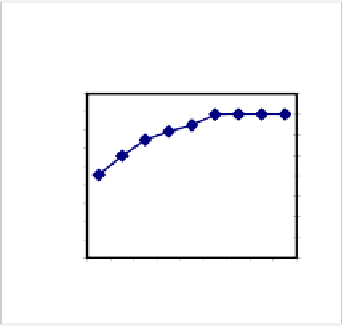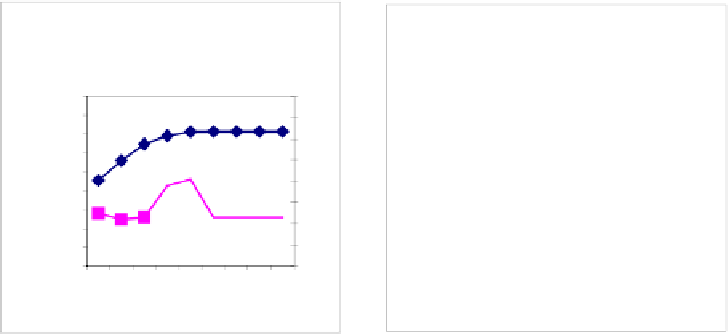Database Reference
In-Depth Information
Total Profit for MaxStorage 1000
Total Profit for MaxStorage 2000
profit
time
profit
time
45,000
0.8
45,000
0.8
40,000
0.7
40,000
0.7
35,000
35,000
0.6
0.6
30,000
30,000
0.5
0.5
25,000
25,000
0.4
0.4
20,000
20,000
0.3
0.3
15,000
15,000
0.2
0.2
10,000
10,000
0.1
0.1
5,000
5,000
0
0
0
0
20
50
100 150 200 300 400 450 500
N
U
20
50
100 150 200 300 400 450 500
N
U
Total Profit for MaxStorage 4000
Total Profit for MaxStorage 3000
profit
time
profit
time
45,000
0.8
45,000
0.8
40,000
40,000
0.7
0.7
35,000
35,000
0.6
0.6
30,000
30,000
0.5
0.5
25,000
25,000
0.4
0.4
20,000
20,000
0.3
0.3
15,000
15,000
0.2
0.2
10,000
10,000
0.1
5,000
0.1
5,000
0
0
0
0
20
50
100 150 200 300 400 450 500
N
U
20
50
100 150 200 300 400 450 500
N
U
Fig. 3.
Effect of varying max storage and max number of items on the objective
5 Conclusions
In this paper, we have introduced a general class of problems called the value based
optimal item package problem that can support real world business decisions using
data mining. The solutions to these problems require the combination of mathematical
modeling with data mining and knowledge discovery from large transaction data. We
formulated a generic problem using the mixed integer linear programming model and
implemented it using real life transactional data from a retail store. Our specification
provides scope for using a large number of methodologies available in the literature to
solve the value based frequent item set problems.
It is well known that the general integer linear programming problem is NP hard.
In addition, in many practical applications of the frequent item set problem, the
parameters like N, the number of items and T, the number of transactions in the data
base may be very large. When N and T are not very large, we can use some of the























Search WWH ::

Custom Search